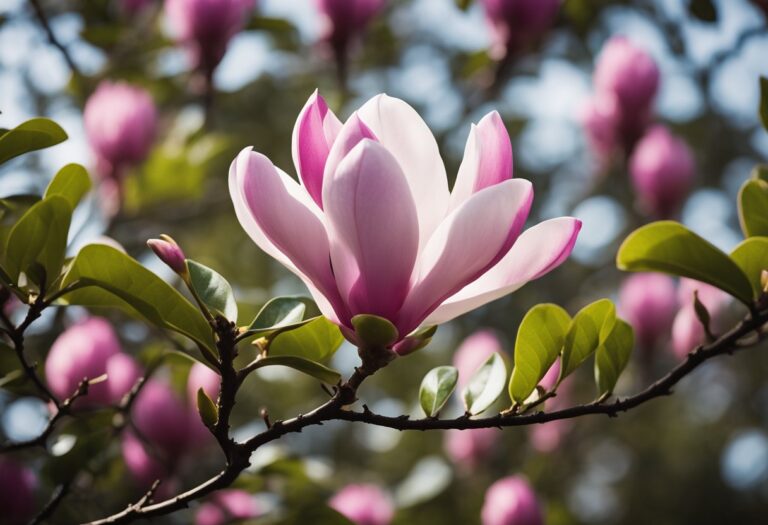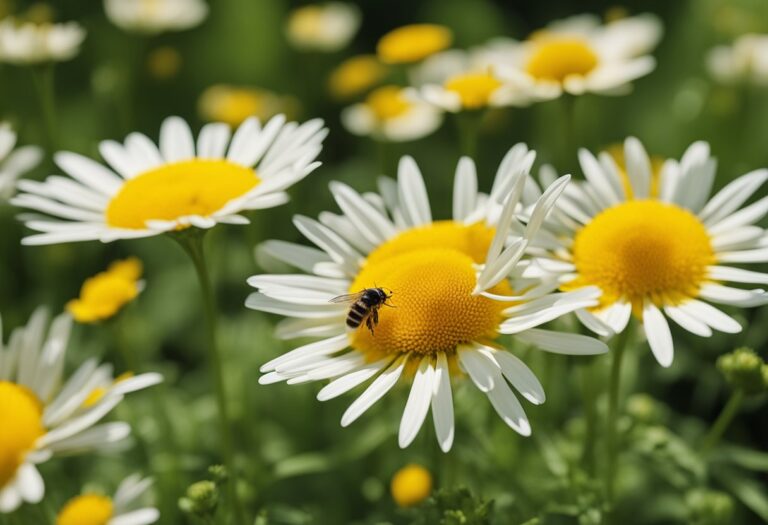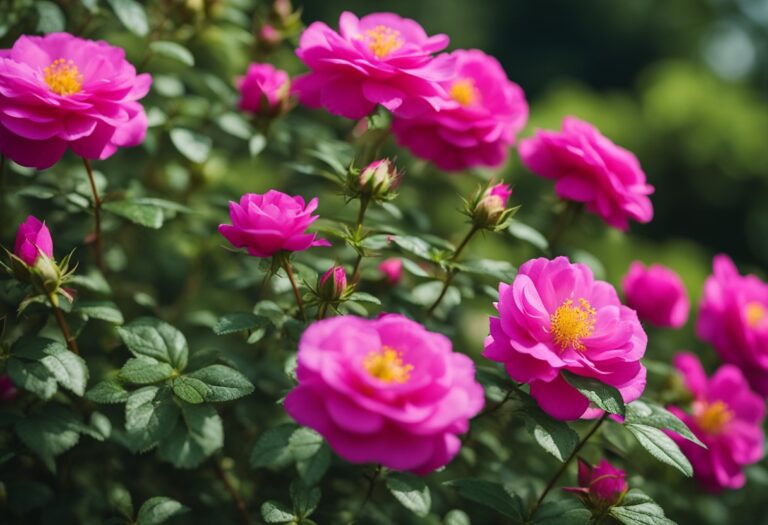Overview of Snow Azalea
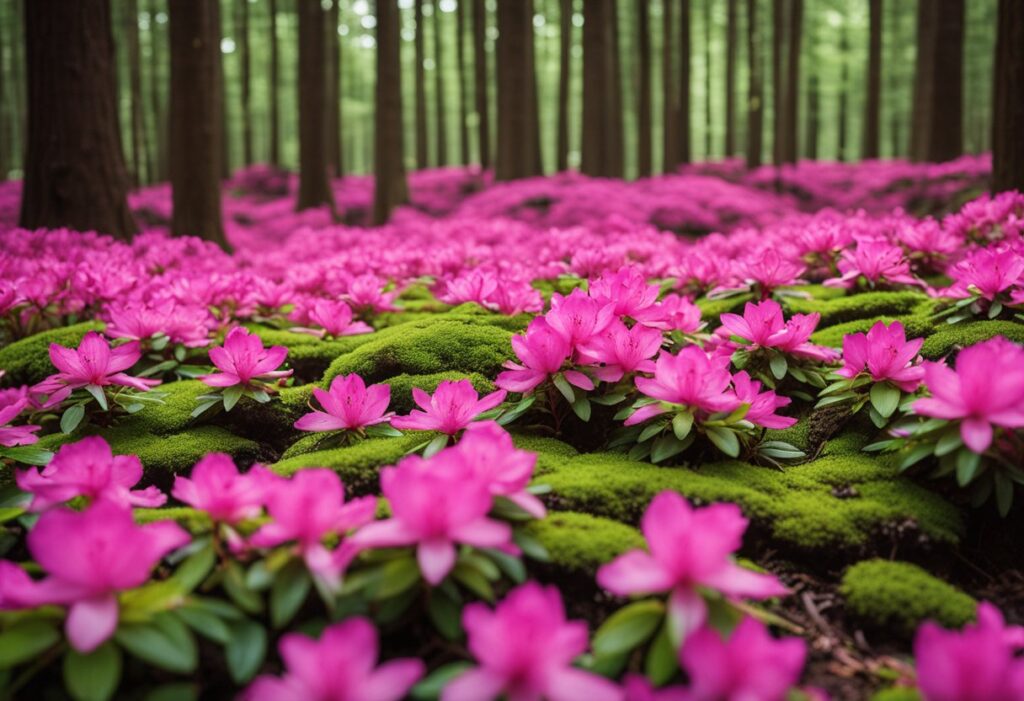
The Snow Azalea, belonging to the Rhododendron kurume group, is a modest yet striking evergreen shrub that becomes a spectacle in early spring. This variety has adapted well to diverse climates and garden settings.
Here’s what you should know about the Snow Azalea:
- Height & Spread: Typically, it will grow 3 to 5 feet tall and equally wide, forming a dense mound that fits nicely in small gardens.
- Flowers: You’ll be greeted with an abundance of pure white, fragrant blooms that can brighten shaded areas.
- Foliage: Expect glossy, dark green leaves that remain on the plant across seasons, adding to its allure.
Caring for your Snow Azalea involves:
- Light: Your Snow Azalea thrives in partial shade, though it can tolerate full shade.
- Soil: Ensure the soil is acidic, with pH levels ranging from 4.5 to 6.0, to maintain plant health.
- Watering: Regularly check the soil moisture and water appropriately. Azaleas prefer well-drained conditions.
- Pruning: Light pruning after blooming can encourage bushier growth and better flowering in the subsequent season.
USDA hardiness zones for the Snow Azalea range from 7 to 9, indicating a good tolerance to climate variations. Cultivate it as a container plant or within borders for that touch of elegance that complements any landscape.
Cultivation and Care

Successfully cultivating Snow Azaleas, a classic Kurume variety, requires precise attention to planting practices, moisture levels, soil conditions, and exposure to sunlight and temperature. These guidelines are designed to help your azaleas not only survive but flourish.
Planting Guidelines
To plant Snow Azaleas, choose a location with dappled sunlight and well-drained soil. Dig a hole twice as wide as the root ball but the same depth, ensuring the top of the root ball sits level with the soil surface. Gently backfill the hole, without overly compacting the soil.
Watering Requirements
Initially, water your Snow Azaleas deeply to settle the soil around the roots and then maintain consistent moisture. Weekly watering is essential during the first growing season, tapering to when the top 2 inches of soil are dry once the plant is established.
Soil Composition
Snow Azaleas thrive in acidic soil with a pH between 4.5 and 6.0. The soil should be rich in organic matter and maintain adequate drainage to prevent root rot. To improve the structure of heavy clay soils, amend with peat moss or compost.
Sunlight and Temperature
Snow Azaleas prefer partial shade; too much direct sunlight can scorch leaves, while too little can reduce blooming. They are suited for USDA Hardiness Zones 6-9. Protect azaleas from harsh winter winds, particularly in the colder end of their range.
Design and Landscape Use
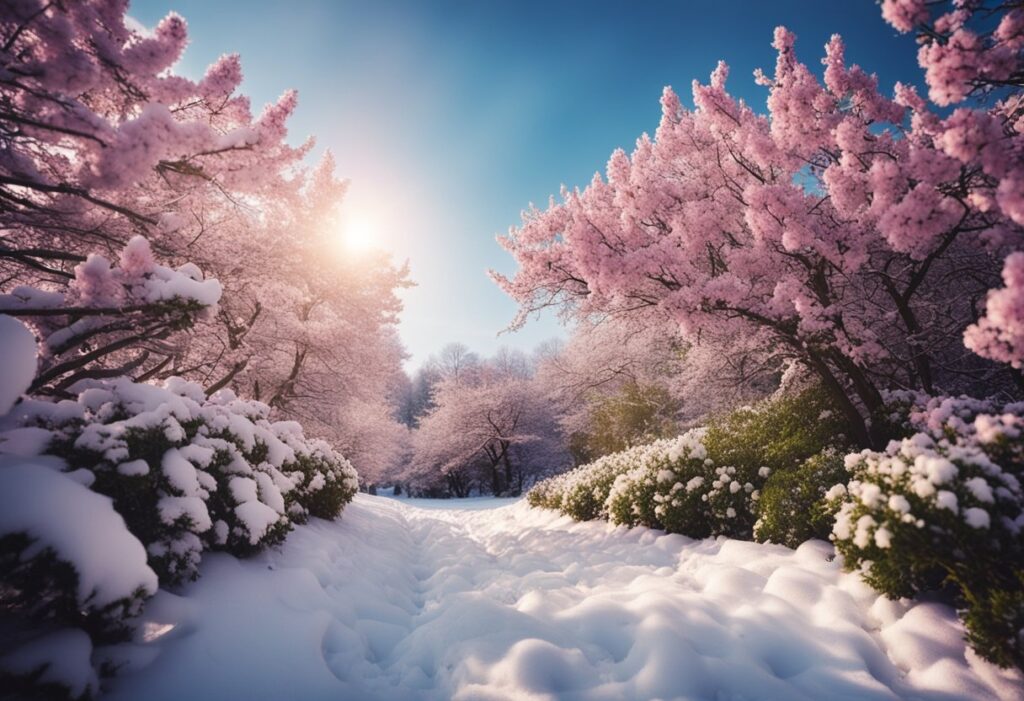
When incorporating Snow Azalea—Classic Kurume into your garden, consider its aesthetic and practical compatibility with other plants and the overall design principles to achieve a cohesive and thriving landscape.
Companion Plants
Your Snow Azalea works well with a variety of companion plants that share similar cultural needs, such as:
- Ferns: Provide a lush, green backdrop, and contrast to the Snow Azalea’s vibrant flowers.
- Hostas: Their broad leaves complement the delicate foliage of the azalea, and the variation in color adds depth to the garden bed.
- Hydrangeas: Their large blooms and stature can create an appealing textural contrast.
Landscape Design Principles
When planning your landscape, consider these design principles to enhance the visual appeal of your Snow Azalea:
- Balance: Maintain a sense of equilibrium by placing Snow Azaleas in groups or as focal points amidst lower-growing plants.
- Color Coordination: Choose plants with bloom colors that either complement or effectively contrast with the Snow Azalea’s white flowers.
- Layering: Position your Snow Azaleas at middle height in a layered scheme, with taller trees or shrubs behind and lower plants in front.
Varieties of Kurume Azaleas
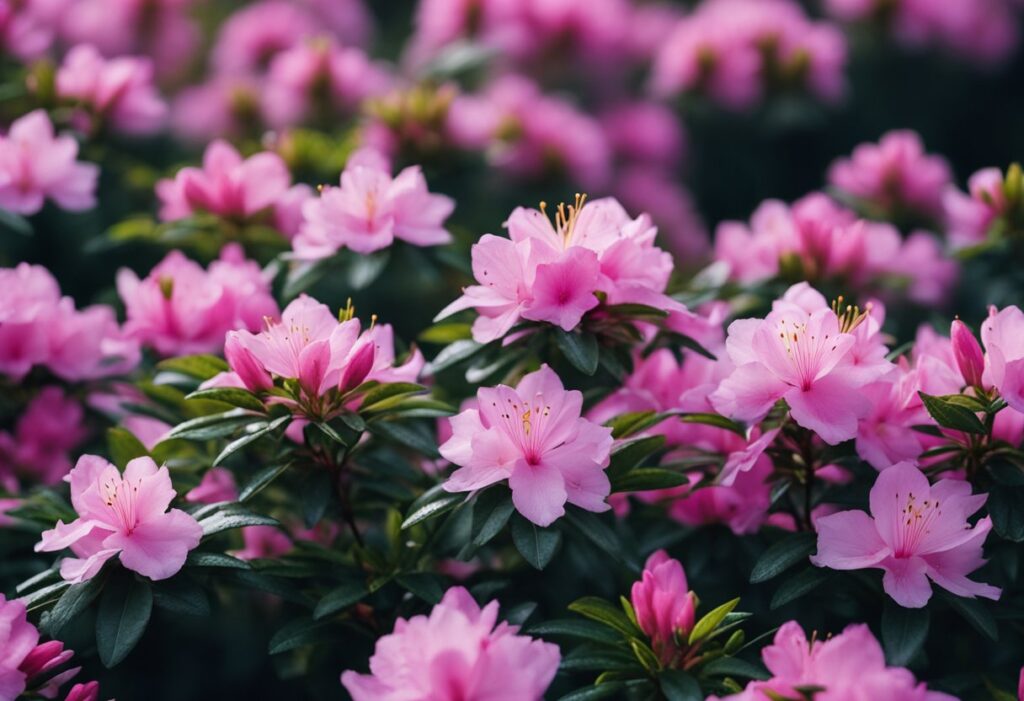
Kurume azaleas originate from Japan and are prized for their small, dense foliage and masses of brightly colored blooms. As you explore their varieties, you’ll find a spectrum of colors and forms suitable for several garden designs.
- Hinodegiri: This variety is well-loved for its vibrant red flowers. It’s compact and suitable for small gardens or as a part of a larger landscape.
- Coral Bells: Exhibiting pretty pink blooms, ‘Coral Bells’ adds a soft touch of color to your garden in spring.
- Snow: A standout with its pure white flowers, the ‘Snow’ azalea provides strong contrast against darker foliage.
Additionally, here’s a brief look at some notable Kurume azaleas:
| Name | Flower Color | Characteristics |
|---|---|---|
| Mother’s Day | Dark Red | Hardy, with a showy flower display. |
| Sherwood Red | Bright Red | Maintains a consistent red hue. |
| Christmas Cheer | Pink | Known for its early bloom time. |
| Hexe | Magenta | Distinguishes itself with unique color. |
| Pink Pearl | Pale Pink | Soft hues ideal for serene settings. |
When caring for these azaleas, ensure they are planted in well-drained, acidic soil. They benefit from partial shade and should be shielded from harsh afternoon sun. Pruning is typically done after the spring blooming period to shape the plant without sacrificing the next season’s buds. Remember, your Kurume azaleas will thrive with a little attention and the right conditions.
Pests and Diseases
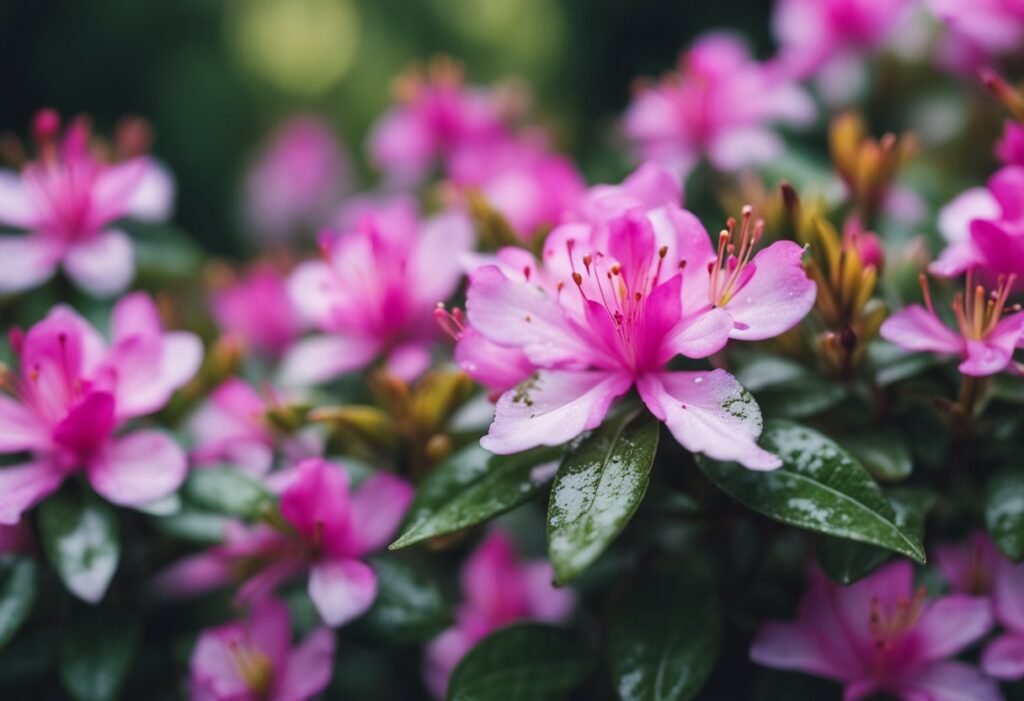
Ensuring the health of your Snow Azalea – Classic Kurume involves vigilance against certain pests and diseases. Familiarize yourself with the symptoms and treatments to maintain vibrant shrubs.
Common Pests
The Snow Azalea – Classic Kurume may encounter a variety of pests. Here are some of the most common:
- Aphids: Tiny insects that cluster on new growth and undersides of leaves. You can manage them with insecticidal soap or neem oil.
- Lace Bugs: These pests are recognized by the stippled appearance they leave on leaves. They are treated with horticultural oils or systemic insecticides.
- Vine Weevil: Adult weevils chew leaves, while larvae feed on roots. Use nematodes or insecticides for larvae, and traps or insecticides for adults.
Disease Management
Disease prevention and control are critical for the health of your azaleas:
- Azalea Gall: Caused by a fungus, it results in swollen, distorted leaves. Prune affected leaves and ensure proper air circulation.
- Petal Blight: This fungal disease affects flowers, leading to spotted, decayed blooms. Remove all fallen debris and consider applying a fungicide during wet conditions.
Frequently Asked Questions
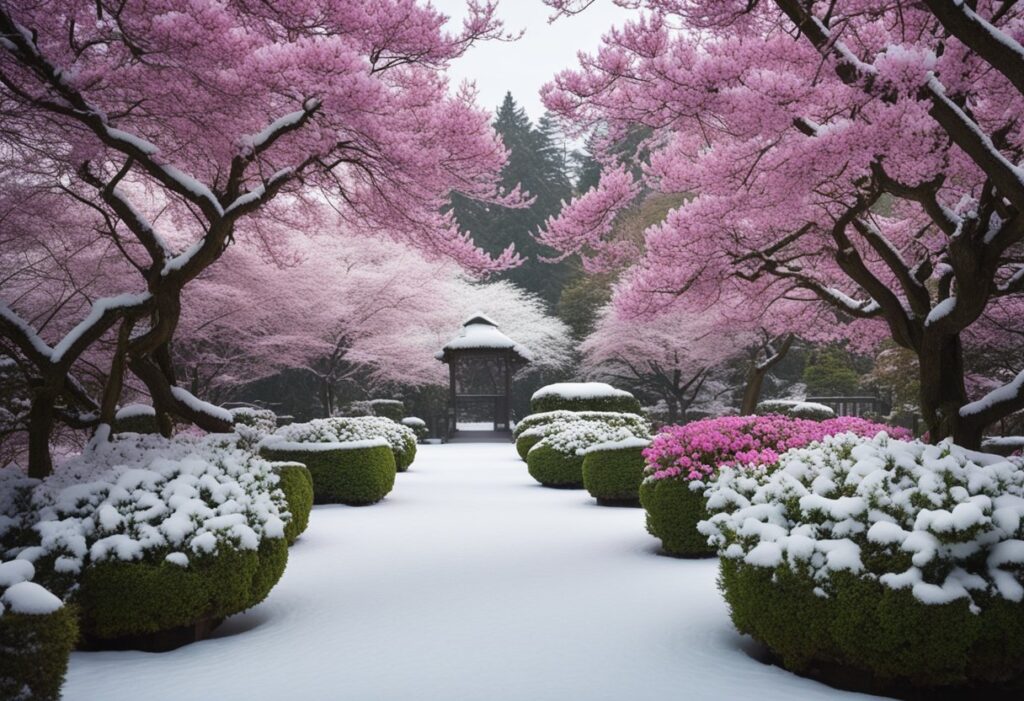
This section provides detailed answers to some of the most common questions about the ‘Classic Kurume’ azalea. Whether you’re curious about its growth habits or its resilience to cold, these insights will guide you in understanding and caring for this particular azalea variety.
How large does the ‘Classic Kurume’ azalea grow?
Your ‘Classic Kurume’ azalea will mature to approximately 2 to 4 feet in both height and width. It is a compact shrub suitable for small gardens or as part of a larger landscape design.
Where can I purchase ‘Classic Kurume’ azaleas?
You can find ‘Classic Kurume’ azaleas at most nurseries and garden centres, especially those specialising in azaleas. You can also check online retailers and plant catalogues for availability.
What is the recommended spacing for planting ‘Classic Kurume’ azaleas?
When planting ‘Classic Kurume’ azaleas, allow for 2 to 4 feet spacing between each plant. This ensures they have enough room to grow to their full potential without overcrowding.
What are the distinguishing characteristics of ‘Classic Kurume’ azaleas in winter?
During winter, ‘Classic Kurume’ azaleas maintain their dark green foliage, which can sometimes turn to a purplish color in cold climates. They are evergreen, adding color and structure to your garden in the dormant season.
Can ‘Classic Kurume’ azaleas survive frost and cold weather conditions?
Yes, ‘Classic Kurume’ azaleas are quite cold-hardy and can survive frost and cold weather. They can withstand temperatures down to about -10°F, though prolonged extreme cold may require some protection.
What are some similar azalea varieties to ‘Classic Kurume’?
Similar azalea varieties to ‘Classic Kurume’ include ‘Gumpo’ and ‘Hino Crimson’.
‘Gumpo’ is known for its dwarf growth habit, while ‘Hino Crimson’ offers striking red flowers. Both share the ‘Classic Kurume’s’ preference for acidic soil and partial shade conditions.







